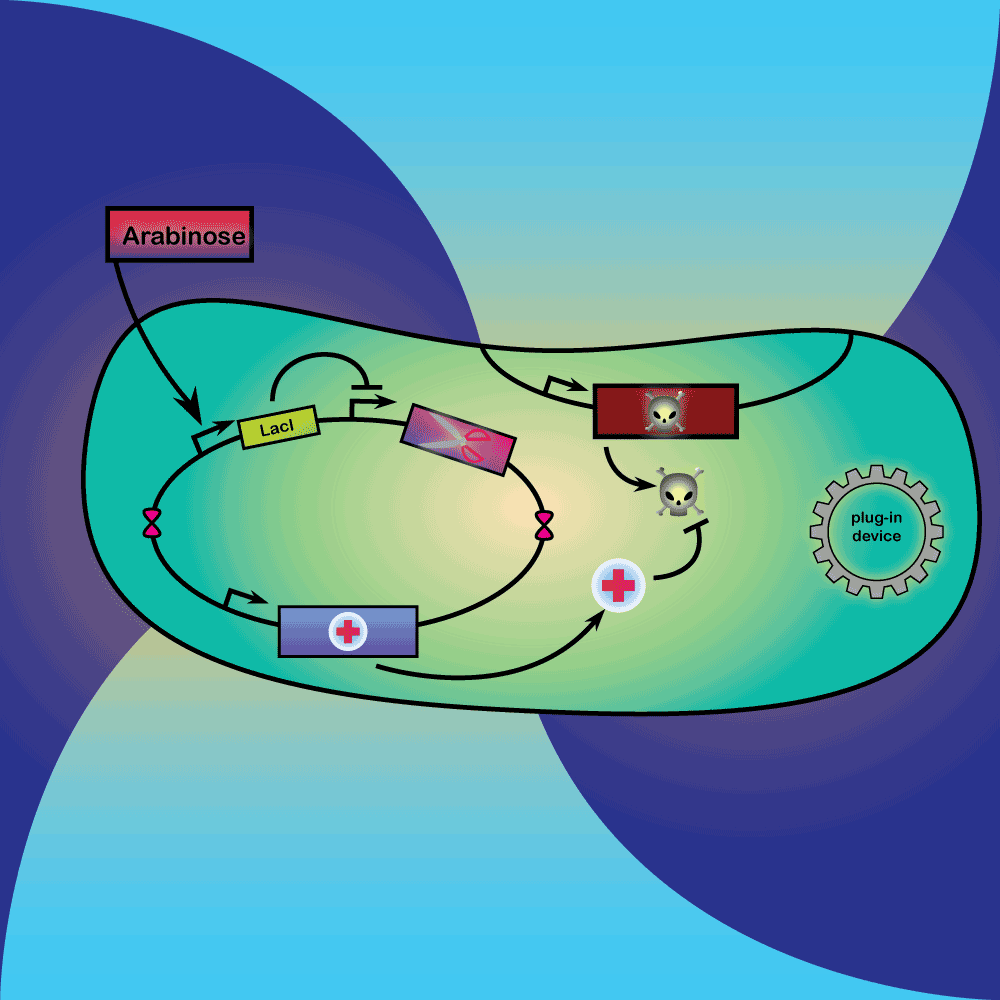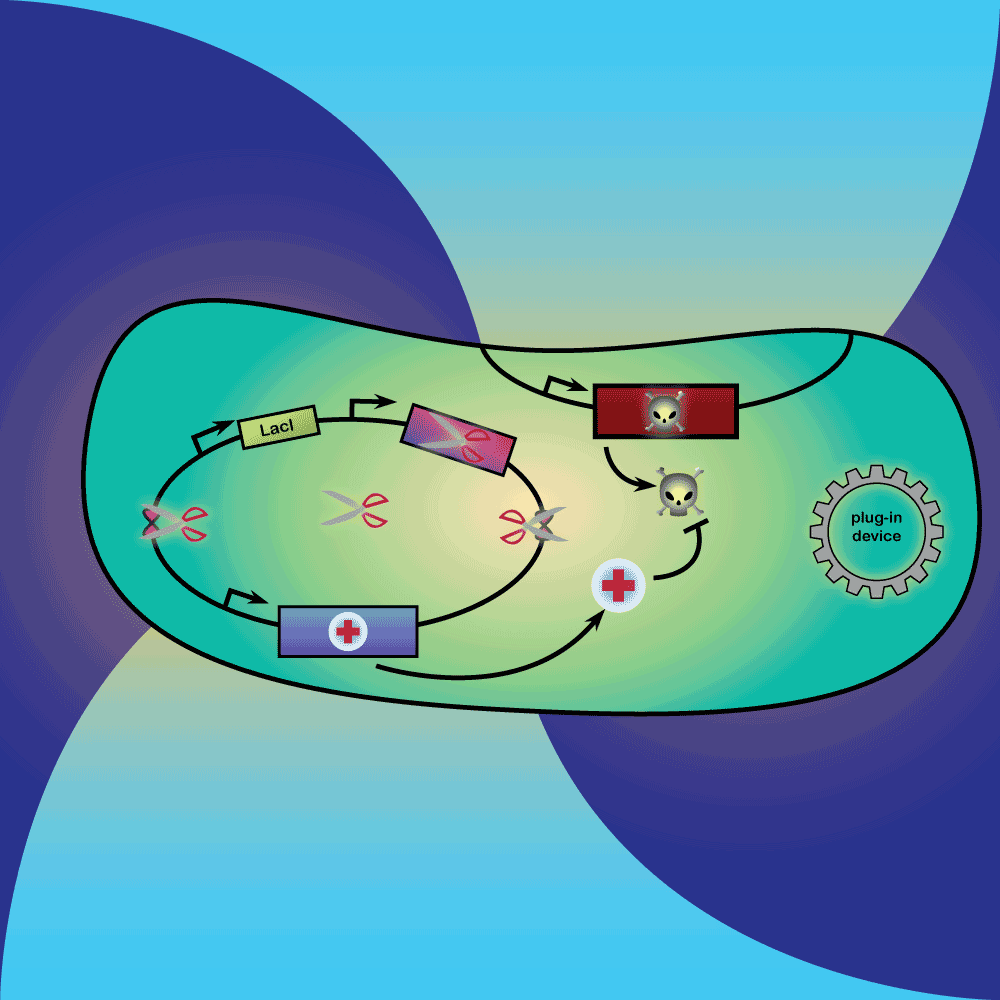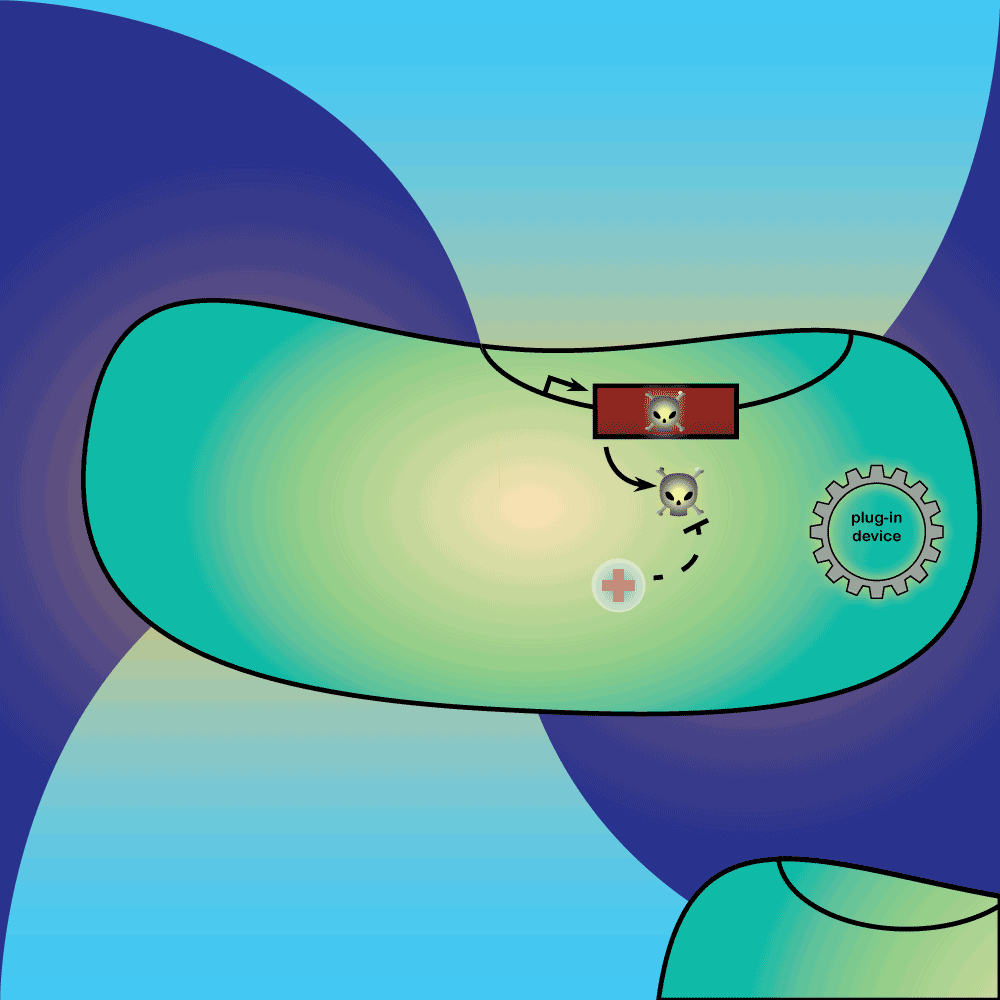Team:Paris Bettencourt/Overview
From 2012.igem.org
Revision as of 01:54, 27 September 2012 by Ewintermute (Talk | contribs)
Project Overview



1) Physical containment: Our cells will be encapsulated with Arabinose and LB in order to avoid release of DNA/cells and to permit growth


1) Physical containment: Our cells will be encapsulated with Arabinose and LB in order to avoid release of DNA/cells, while permitting their growth.
2) Semantic Containment: Our synthetic system will have an amber codon embedded in its genes. The amber suppressor system will ensure their expression in our bacteria, while preventing it in natural populations.
2) Semantic Containment: Our synthetic system will have an amber codon embedded in its genes. The amber suppressor system will ensure their expression in our bacteria, while preventing it in natural populations.


1) Physical containment: Our cells will be encapsulated with Arabinose and LB in order to avoid release of DNA/cells, while permitting their growth.
2) Semantic Containment: Our synthetic system will have an amber codon embedded in its genes. The amber suppressor system will ensure their expression in our bacteria, while preventing it in natural populations.
3) Delay system: In the presence of Arabinose, LacI is produced, repressing the expression of a restriction enzyme. Once Arabinose is not present any more, the LacI repressor concentration decreases with dilution and degradation. This leads to the expression of the restriction enzyme.
2) Semantic Containment: Our synthetic system will have an amber codon embedded in its genes. The amber suppressor system will ensure their expression in our bacteria, while preventing it in natural populations.
3) Delay system: In the presence of Arabinose, LacI is produced, repressing the expression of a restriction enzyme. Once Arabinose is not present any more, the LacI repressor concentration decreases with dilution and degradation. This leads to the expression of the restriction enzyme.


1) Physical containment: Our cells will be encapsulated with Arabinose and LB in order to avoid release of DNA/cells, while permitting their growth.
2) Semantic Containment: Our synthetic system will have an amber codon embedded in its genes. The amber suppressor system will ensure their expression in our bacteria, while preventing it in natural populations.
3) Delay system: In the presence of Arabinose, LacI is produced, repressing the expression of a restriction enzyme. Once Arabinose is not present any more, the LacI repressor concentration decreases with dilution and degradation. This leads to the expression of the restriction enzyme.
4) Restriction Enzyme system: The restriction enzyme destroys the plasmid carrying the synthetic circuit and the anti-toxin gene.
2) Semantic Containment: Our synthetic system will have an amber codon embedded in its genes. The amber suppressor system will ensure their expression in our bacteria, while preventing it in natural populations.
3) Delay system: In the presence of Arabinose, LacI is produced, repressing the expression of a restriction enzyme. Once Arabinose is not present any more, the LacI repressor concentration decreases with dilution and degradation. This leads to the expression of the restriction enzyme.
4) Restriction Enzyme system: The restriction enzyme destroys the plasmid carrying the synthetic circuit and the anti-toxin gene.


1) Physical containment: Our cells will be encapsulated with Arabinose and LB in order to avoid release of DNA/cells, while permitting their growth.
2) Semantic Containment: Our synthetic system will have an amber codon embedded in its genes. The amber suppressor system will ensure their expression in our bacteria, while preventing it in natural populations.
3) Delay system: In the presence of Arabinose, LacI is produced, repressing the expression of a restriction enzyme. Once Arabinose is not present any more, the LacI repressor concentration decreases with dilution and degradation. This leads to the expression of the restriction enzyme.
4) Restriction Enzyme system: The restriction enzyme destroys the plasmid carrying the synthetic circuit and the anti-toxin gene.
5) Suicide system: Once the anti-toxin concentration is below a given threshold, the toxin is no longer inhibited. It kills the cell as well as its neighbors, and eliminates extracellular DNA via its DNase activity.
2) Semantic Containment: Our synthetic system will have an amber codon embedded in its genes. The amber suppressor system will ensure their expression in our bacteria, while preventing it in natural populations.
3) Delay system: In the presence of Arabinose, LacI is produced, repressing the expression of a restriction enzyme. Once Arabinose is not present any more, the LacI repressor concentration decreases with dilution and degradation. This leads to the expression of the restriction enzyme.
4) Restriction Enzyme system: The restriction enzyme destroys the plasmid carrying the synthetic circuit and the anti-toxin gene.
5) Suicide system: Once the anti-toxin concentration is below a given threshold, the toxin is no longer inhibited. It kills the cell as well as its neighbors, and eliminates extracellular DNA via its DNase activity.
Our project - a hypothetical case study
Imagine a farmer that wants measure the nutrient concentration in her field, the better to optimize her fertilizer use. We could provide her with cells carrying a nitrate biosensor (AgrEcoli), encapsulated in alginate beads. She would spread the beads in her field, wait for 12 hours, and then check if they are glowing in response to the nitrates in the soil.
We want this system to work the way the original designers intended. We also want to reduce the chance that the engineered bacteria will survive in the soil, release intact DNA, or transfer genes to a soil microbe.
Our system will be implemented as a pair of plasmids, compatible with the most commonly used BioBrick p
 "
"


 Overview
Overview Delay system
Delay system Restriction enzyme system
Restriction enzyme system MAGE
MAGE Synthetic import domain
Synthetic import domain Safety Questions
Safety Questions Safety Assessment
Safety Assessment